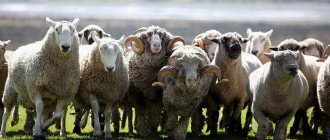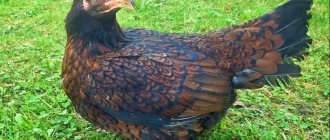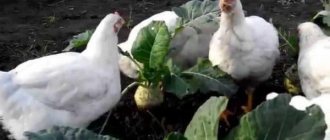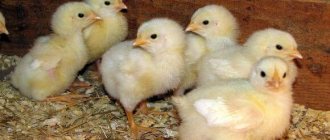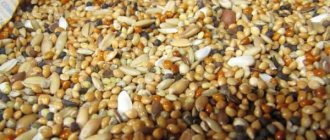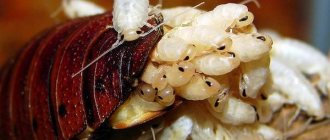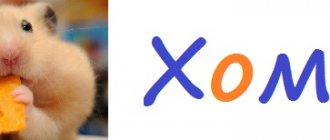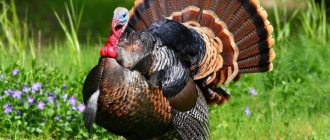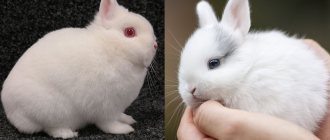Today we will introduce readers to an interesting breed of chickens - Naked Neck. With a very unique appearance, the bird has good egg and meat productivity, which makes it very attractive to owners of small farms and private farmsteads.
Representatives of the breed have an unusual appearance; they can be easily distinguished at first glance from other chickens by the absence of feathers on the neck
You can get an idea of the main features of “naked necks” from the table:
| Parameter | Characteristic |
| Class | Birds |
| View | Chickens (Gallus gallus L.) |
| Breed | "Naked" |
| Productivity type | Meat and egg |
| Plumage color | White, black, blue, gray, motley, red, partridge |
| Age of puberty | 6 months |
| Egg production indicators | Medium (up to 180 units per year) |
| Egg weight | About 60 g |
| Shell color | Cream or beige |
| Hatchability and survival of young animals | Good (94-95%) |
| Growth rate of young animals | High |
| Live weight of an adult | Chicken – 2.5 kg, rooster – up to 3.5 kg |
| Consumer qualities of meat and eggs | Very high |
| Sustainability | The bird is unpretentious to living conditions, easily tolerates unfavorable temperatures (including frosts down to −15 degrees), and almost never gets sick. |
| Year of registration in the State Register of the Russian Federation | 1993 |
| Originators | Federal State Budgetary Institution "Federal Scientific Center for Animal Husbandry-VIZh named after Academician L. K. Ernst" (Moscow region), Federal State Budgetary Institution Federal Scientific Center "All-Russian Scientific Research and Technological Institute of Poultry Breeding of the Russian Academy of Sciences", LLC "Gene Fund" (Sergiev Posad, Moscow region) |
Maintenance and care
French scientists have managed to make the almost impossible a reality.
Their hybrid gained the ability to adapt to any climatic conditions - from moderate to the most extreme. Thanks to this, birds can live in any corner of the planet and still feel good. Even the line of bare-necked chickens does not suffer from cold and frost. The winged Sasso family breed of chickens needs a spacious walking yard. There is no need to install high fences - this is of no use, because black whales are not capable of making high flights. The main thing is that the walk should be equipped with a small canopy, under which the whole family could gather in case of rain.
All other care requirements are exactly the same as for other breeds. Kvochkas need cleanliness, timely replacement of bedding and disinfection. The family needs the opportunity to take ash baths, which will protect them from parasites.
Molting and break in egg laying
Broilers from France do not lay eggs very actively without molting, but during this period they completely stop laying eggs. The molting speed of representatives of different lines is different. Some people quickly recover their feather cover, while others have problems with fouling. But, the partial absence of feathers does not negatively affect the health of the hens.
Planned herd replacement
Raising young animals solely for the purpose of producing meat carcasses is the most profitable option. Young animals are sent for slaughter at an early age - starting from 2 months.
Theoretically, birds can be kept for longer - there are Sasso lines that gain weight at a moderate pace and compensate for the cost of their maintenance with testicles. But, the maximum period of their productivity is 2 years, no more.
Frequent illnesses
Unlike traditional broilers, feathered Frenchies practically do not get sick. But this is only possible if the farmer is scrupulous about preventive measures.
Families living on poultry farms are forced to periodically take antibiotics, because when a large number of birds accumulate, the risk of outbreaks of infectious diseases increases tenfold.
There is no such need for a domestic family, but it is still important to protect from contact with rodents and wild birds, vaccinate in a timely manner and maintain cleanliness. https://www.youtube.com/embed/GPy7oeKEfLg
What are the reviews?
Diseases
Spanish bare-necked chickens are famous for their good immunity to various diseases.
But they also have weak points, the main one is their paws, therefore:
- It is necessary to carefully and regularly inspect the birds and note possible defects - crooked fingers, swollen joints, the formation of a whitish coating or lameness.
- Treatment can be based on the characteristics of the disease, but most often unhealthy birds are sent for slaughter.
- It’s easier to carry out preventive measures. These include:
- destruction of parasites through regular disinfection of the premises;
- eliminating sharp objects that can cause injury to limbs.
- Also, chickens are given ash baths.
Naked-necked chickens are very convenient and profitable for households and breeding for meat on a small scale for commercial purposes. They are comfortable and unpretentious, lay eggs well even in the cold season, practically do not get sick and have an interesting appearance.
Naked breed of chickens: description
The bare-necked breed of chickens, as mentioned earlier, is more reminiscent of turkeys than chickens. The key point in describing the representatives of the breed is the absence of feathers on the bird’s crop and neck. This feature is characterized by the fact that on these parts of the bird’s body the feather follicles are undeveloped. A so-called feather cap is formed on the back of the bird’s head, and in front of the neck the feathers are arranged so that they resemble a bow.
Bare-necked chickens also lack plumage under the wings; these areas are called apteria. When a bird has a lot of such hairless areas on its body, this means that it corresponds to the description of the standard of its breed. There are also no feathers on the small triangles on the inside of the lower leg.
The nakedness of these birds is formed in the embryonic period, when the feather papillae begin to develop. This trait then passes on to adults.
The bare red neck is the result of the work of breeders. It goes very nicely with a bright red “cap” on the head of hens or a voluminous bright crest of roosters. If we are talking about a bare-necked hen, then she has beautiful earrings of the same bright color.
As for other points describing the appearance of these birds, they are as follows:
- the beak of bare-necked chickens is slightly curved and has a scarlet or yellow color;
- eyes have a red-orange tint;
- Birds molt every year, during which time they completely change the outer layer of their skin;
- the head is small but wide, the crest is rose-shaped or leaf-shaped;
- growth is small;
- the body has the shape of a rectangle, the body is elongated and slightly elevated;
- the chest is rounded, this is achieved due to well-developed pectoral muscles;
- the wings are loosely adjacent to the body, slightly lowered down;
- short and strong legs, they have four toes, they are gray or yellow-orange in color;
- a small and fluffy ponytail is located at an angle of 15 degrees to the body, large and formed braids.
The feather cover of bare-necked chickens can have the following shades:
- cuckoo;
- white with black edges;
- motley;
- black;
- brown;
- red;
- blue with border.
The weight of an adult chicken is about 2-3 kg, but a rooster can weigh four kilograms.
What is not allowed in the appearance of bare-necked chickens:
- when the eyes are very dark;
- on bare areas the skin turns yellow;
- the tail is steep;
- the body is weak;
- earrings are white;
- head black;
- the neck and inner part of the lower leg are feathered.
Diseases
Specific diseases are not typical for Sasso. Chickens have strong immunity and are resistant to pests.
- Parasites
- Infectious
- Other
Chicken mite
How to treat a chicken coop and how to treat a bird. Description of drugs and methods of control
Read
Coccidiosis
Thirst, loss of appetite, swelling, bloody droppings, anemia, weakness, poor coordination
Read
Ascariasis
Loss of appetite, liquid droppings, pale mucous membranes of the comb, limbs, ruffled plumage, lethargy, vomiting
Read
Amidostomiasis
Symptoms of the acute form: apathy, general weakness, decreased or lack of appetite, breathing problems, unsteady gait, retarded growth and development
Read
Prostagonymosis
Decreased mobility, loss of appetite, unsteady gait, bloating, fever, impaired egg laying, exhaustion
Read
Knemidocoptic mange (“lime foot”)
Acute symptoms: light gray bumps appear on the legs, the bird limps and stands on one leg, the cloaca and joints become inflamed, the beak is deformed
Read
Heteracidosis
Symptoms: indigestion, diarrhea, loss of appetite, lethargy, decreased egg production, retarded growth and development
Read
Trichomoniasis
Symptoms of the acute form: fever, depression and loss of appetite, diarrhea with gas bubbles and a putrid odor, enlarged goiter, difficulty breathing and swallowing
Read
Pullorosis (typhoid fever, salmonellosis)
Weakness, lack of coordination, drooping eyelids, difficulty breathing, lack of appetite, indigestion
Read
Colibacillosis
Lack of appetite, thirst, sudden increase in temperature, pale scallops, diarrhea
Read
Pasteurellosis
Fever, foamy mucus, change in stool color, refusal to feed, thirst, lethargy, wheezing, heavy breathing
Read
Marek's disease
Paralysis of the limbs, difficulty breathing, severe exhaustion and loss of strength, refusal of food and water, pallor of the scallop
Read
Gumboro disease
Diarrhea, loss of appetite, trembling legs and head, sudden death
Read
Laryngotracheitis
Weakness, swelling of the neck, difficulty breathing, cough, wheezing, blood clots in the mucus released when coughing, lack of appetite, indigestion
Read
Bird flu
Refusal to eat, anorexia, diarrhea, purulent discharge, hoarse breathing, greenish-brown droppings, seizures, darkening of the ridge
Read
Newcastle disease
Decreased appetite, fever, respiratory distress, immobility, conjunctivitis, bloody diarrhea
Read
Apteriosis
Complete or partial absence of plumage, loss of tail feathers, broken embryonic fuzz in young animals, delayed growth of plumage, pecking
Read
Pterophagy
Plucking and eating feathers. What is the reason, why does it require urgent intervention and how to prevent the disease?
Read
Yolk peritonitis
Symptoms of the acute form: loss of appetite, gray-green color of feces, sudden drop in egg production, calcareous deposits on the shell, bluish tint and baldness of the abdominal skin
Read
Cloacite
Symptoms: depressed state, decreased appetite, weight loss, increased need for water, loss of plumage, inflammation and bulging of the cloaca, the presence of ulcers on the mucous membrane, decreased egg production
Read
Description
Colored broiler is rightfully recognized as one of the most common types of poultry. This chicken belongs to the most popular meat and egg category. It grows quickly and has remarkable productivity indicators.
Colored broiler chickens are distinguished by a rather strong structure of an elongated body. They have a wide back and chest. The birds' heads are not very large in size. The growth of colored broilers is usually not very large, but the backbone is quite strong and the muscles are well developed.
Colored broilers are birds with good decorative qualities.
Their plumage is usually very bright and attracts attention. The skin of these individuals is lighter, which also gives them additional attractiveness.
These beautiful and practical birds are distinguished by their high productivity. Therefore, many farmers try to breed colored broilers on their farms. Of course, good performance indicators of birds largely depend on the conditions in which they are kept. Colored broilers need to be fed properly and a high-quality poultry house should be provided for them.
As for the remaining characteristics of these domestic birds, there are a number of features.
- The largest weight of adult roosters with proper care can reach 7 kg, and hens - 4 kg.
- During the day, chickens of this species are able to gain up to 50-60 grams of weight. When broilers are a month old, they can weigh 800-1000 grams - these are very good indicators.
- Most often, colored broilers are sent for slaughter when they reach two months. At this point, birds can weigh from 2 to 2.5 kg.
- Broiler colored layers are distinguished by excellent egg production ability. One female can bring up to 300 eggs to a poultry farmer per year. Not every poultry can boast of such abilities, which makes colored broilers even more in demand and useful on the farm.
- These birds are also characterized by good survival rates of young individuals. This figure is 98%. Of course, this level occurs provided that the birds are properly cared for.
- Color boilers are famous for the highest quality of the resulting products. The meat of these poultry contains a large percentage of animal protein.
Chickens
The main feature of the variety in question is that the chicks gain weight very quickly. The minimum age at which young animals can be sent for slaughter is 65-80 days. At this point they can weigh about 2.5 kg.
Because of this quality, the colored quok has attracted poultry farm owners looking to raise chickens for profit. The fact is that the feed consumption in this case is minimal, and the money invested pays off very quickly.
Let's consider the features of weight gain at different age periods.
- Age 3 weeks - about 305 grams.
- 6 weeks – 900 grams.
- 2 months – 1.5 kg.
- 80 days – 2.5-3 kg.
It is worth noting that some lines do not grow rapidly, so the above data are considered averaged. Depending on the variety, chickens differ in growth and maturation rates.
When it comes to feeding colored babies, there are some subtleties. French farmers claim that babies eat almost everything, and can eat traditionally - broiler feed with a high protein content, as well as herbs and vegetables.
But the difference is that the younger generation needs to formulate their diet in such a way that it consists of 75% dry grain.
Feeding
Young animals
Newly born bare-necked chickens are very sensitive to conditions, so the following rules must be followed:
- Good ventilation of the room, but without strong drafts.
- Maximum density - 25 pcs. per 1 m2 during the first month, the next month and a half - 17 heads, and then - no more than 10 individuals per 1 m2.
- The floor must be covered with bedding, preferably peat. Or you can use regular sheets of paper and pour well-sifted feed with corn grits directly onto them.
- The temperature in the room for the first 5 days must be about 29-30 degrees, then until the end of the second week of the brood’s life it can be reduced to 26 degrees. Subsequently, every week the temperature is reduced by 3 degrees so that by the end of the first month of life the chickens feel comfortable at 18 C.
Important! When a brood appears in the cold season, it is necessary to additionally use infrared lamps indoors for the first month of the chicks’ life. As for the diet of young animals, follow these recommendations:
As for the diet of young animals, follow these recommendations:
Feeding during the first 1.5 weeks at least every 2 hours. Feeders and drinking bowls are attached to the wall at such a distance that the chicks can reach on their own, but do not climb inside with their feet, since the ingress of bird droppings can cause illness in the young. After feeding, it is important to check the crops - if there are chicks whose crops are empty, they are fed individually. The remaining food is removed immediately after finishing the meal.
Menu for chickens in the first month of life:
- During the first days of life, food is made from hard-boiled eggs, crushed and mixed with 50 g of cottage cheese and 50 g of semolina or corn flour. This is the proportion for 1 chicken egg.
- As an alternative, you can also feed a mixture of chicken feed, to which crushed oatmeal and milk powder are added in equal proportions.
- On the 5th day of life, you can introduce greens into the diet, and a week later they make mash with yogurt or meat broth.
- From day 10, chickens can be given boiled grated potatoes, pumpkin and zucchini.
Important! During the first month of life, be sure to use crushed chalk or egg shells as a supplement, which will become a much-needed source of calcium.
Feeding and keeping adult chickens
Despite the fact that the naked-necked chicken breed is considered hardy, it is still necessary to provide them with comfortable conditions.
First of all, this concerns the temperature regime, so that the energy received from the feed is not wasted by the birds on body thermoregulation.
Conditions:
- The optimal temperature is 12-16 degrees with a humidity of 60-70%.
- At temperatures from +1 to +4, laying hens continue to lay eggs, but productivity drops by 20 percent.
- At temperatures ranging from minus 5 degrees, adult individuals survive, but stop laying eggs.
Regarding other indoor conditions:
- There must be a peat bedding on the floor, and it must be loosened from time to time.
- A good ventilation system must be installed in the poultry house to prevent air contamination from excrement.
- In the cold season, it would be a good idea to take care of additional lighting to ensure full daylight from 6 am to 8 pm. Lamps are suitable with a glow of 60 W, 1 pc. for every 6 m2 of area with a ceiling height of 2 meters. It makes no sense to provide more intense lighting, as this will provoke depletion of the nervous system of chickens. But the deficiency will also affect low productivity and insufficient gain of meat mass.
- Chickens are fed 2 times a day - in the first hour after waking up in the morning and in the evening 1.5-2 hours before turning off the lights.
The menu should include:
- Cereals.
- Wet mash.
- Boiled vegetables - zucchini, beets, pumpkin, potatoes.
- Vitamin supplements - bone meal, chalk.
Important! Feed consumption is calculated at the rate of 130 g per day per 1 adult chicken weighing up to 2 kg. Above this weight, another 10 g is added for every additional 250 g of bird weight
Possible problems during cultivation
When breeding broilers of various breeds, you may encounter 2 main problems related to health:
- lameness;
- growth arrest.
The first problem arises from poor quality feed. In this case, the birds’ “menu” needs to be diversified with chalk, bone meal or eggshells. In addition, the disease can be caused by mold in areas where it is kept. To do this, the walls of the room must be treated with an antiseptic, and ventilation must be equipped.
Young individuals suffer from stunted growth due to improper maintenance. It should be remembered that for active growth of birds, the correct temperature regime is necessary. As feed, it is advisable to use mixtures with a high protein content, which promote active metabolism in chickens.
Did you know? Bresse Gaul chicken meat is considered the most delicious in the world. These birds have been raised in the French province of Bresse since 1957.
So, in order to raise colored broilers with minimal or no losses, it is recommended to comply with all the necessary conditions for their maintenance. Only by choosing a suitable place for keeping birds, a diet for young animals and adults, as well as carrying out timely disease prevention, can you get the desired result.
External characteristics
Scientists have worked hard to create several lines with different external characteristics. But, birds generally differ only in color. There are many varieties. Due to this feature, chickens are often also called “colored broilers”. Here are some of the most common varieties.
Some birds have bare necks, but most are fully feathered. The plumage is rigid, quite dense and voluminous. Birds have a powerful physique. They have a wide body, squat, low-slung.
Pronounced belly and chest, as well as a flat back. The body is horizontal, on low paws widely spaced from each other.
The head is small and not unique in any way - with a regular, leaf-shaped crest that is slightly larger than many other varieties. The face, earrings and beak are red. The eyes are red-orange or amber.
The maximum weight that can be expected from roosters is about 5 kg, and hens usually weigh 800-900 grams less. But, it should be borne in mind that weight indicators also differ among different lines of this breed.
Work on the variety continues to this day. The company that deals with it continues to improve the birds. We can definitely say that their character is quite calm - the winged flock is not prone to aggression, is peaceful, but often suffers from stress.
Due to excessive timidity, the quality of the masonry may deteriorate. But they are raised mainly for their carcasses, so there are no problems due to timidity.
Walking yard
Barnacles are calm birds, but far from passive. In order for them to develop evenly, they should be periodically let out for walks around the yard, even in winter. Walking barenecks in winter should be stopped if the temperature drops below -15 °C. Despite the resilience and rapid adaptation of birds to climatic conditions, cold can harm them.
Birds also need sunlight, as well as green food, so you should not place the yard in the shade. But the presence of herbaceous plants will only benefit the birds - green food will partially replace the usual grain food, which means that the poultry farmer can reduce the cost of feeding the chicks. Dust baths in the summer will also come in handy.
Feeding ration
Modesty in feed consumption is another undeniable advantage of the breed, which makes its cultivation economically viable and very profitable. But, despite the small amount of food consumed, the diet of chickens should be complete and balanced, especially at an early age.
Ready-made combined feeds are an excellent solution for feeding small broilers - they consist of several lines (starter, fattening, finishing), created for different ages of birds, and, accordingly, contain the optimal amount of nutrients depending on the needs of the bird.
In addition, industrial feeds often already contain preventive substances. However, the cost of the finished product is rather high, so for many poultry farmers the best option is to independently prepare dry feed and mash.
In the first days from birth, chickens are fed crushed hard-boiled eggs mixed with millet. Starting from the third day, the diet can be expanded by adding chopped grass and sprouts. From the fifth day, cottage cheese and fermented milk products are introduced. After another couple of days, you can introduce chopped or grated vegetables.
At three weeks of age, the diet is expanded by adding whole grains, eggshells, shell rock, meat and bone meal and fish meal. At one month of age, the diet of small broilers will be the same as that of adult chickens.
The feeding frequency at the initial stage is 8 times a day, two-week-old birds are fed 6 times a day, the next week 4 times a day, then reduced to morning and evening feeding
It is important to ensure that the chickens always eat their fill.
Adult chickens
In most cases, broilers do not survive to adulthood, since starting from 60–80 days, when they are fully formed and their weight reaches its peak, the birds are sent for slaughter. If, for some reason, you keep broilers for more than this period, you need to correctly prepare the birds’ diet.
You can prepare your own feeding mixture using the following ingredients:
- 400 g chopped corn;
- 200 g crushed wheat;
- 100 g chopped barley;
- 50 g chopped oats;
- 150 g sunflower cake;
- 200 g low-fat cottage cheese;
- 60 g fish/meat and bone meal;
- 1/2 tsp. baker's yeast.
- 150–200 g yogurt or whey.
Take care of the drinking bowls, as for both small broilers and adult chickens, the constant availability of fresh drinking water is mandatory.
What to feed an adult flock?
In principle, almost everyone can eat hens. Let's consider several features of the diet for adult representatives of the French cross.
- An adult family also needs a diet with a predominance of grains.
- Cross-breed producers recommend feeding with porridge, or, as they also say, wet mash. Birds eat them with pleasure and easily digest them.
- The grain basis of the diet is compound feed for broilers, which includes the entire necessary range of nutrients.
- In small quantities, you can add protein products of animal origin to your diet - fermented milk, meat, fish.
External differences between a broiler and a regular chicken
Hybrids have a number of visual and physiological differences from their egg relatives. We will consider them further.
Color
Broiler chicken is completely white, but at a younger age it is completely yellow. During plumage development, white feathers appear first at the tips of the wings. If the chicken has colored pigment spots on its body - black, red or brown, especially on the head, the scallop is most likely a representative of the egg breeds, which include the Black Moravian, Russian White and Minorca.
Meanwhile, it is impossible to accurately determine whether a chicken is a broiler type just by color, since chicks of other breeds can also be completely yellow, and as they develop, they become completely white. In this regard, it is necessary to continue further examination of the individual in order to accurately establish its species.
Body structure
By this characteristic, a broiler can be distinguished from the age of 5-7 days from birth:
- The body shape of broilers is wide and rectangular, while that of laying hens is more oval and smooth;
- broilers have a wide chest and well-developed muscles, which are especially visible on the thighs of older chickens;
- The paws of broilers are shorter than those of other breeds, but they are thicker and more stable, since they must easily withstand considerable weight;
- broiler wings are shorter than those of their relatives;
- The head of a week-old broiler looks awkwardly large relative to the proportions of the body, but over time it will become normal in shape, so the bird’s shape will become proportional.
Sexual characteristics
In broiler chickens, sexual differences have been poorly visible for quite a long time, which is due to two factors:
- cockerels and hens have poorly developed combs and beards;
- Birds do not have beautiful decorative earrings.
The fact is that hybrids are not intended for further reproduction, therefore, during selection, sexual differences were taken into account little. In chickens of egg breeds, it is much easier to establish sexual differences, since their combs and beards are well developed.
Weight
Broilers are focused on rapid weight gain, so they weigh more than laying hens, and starting from the first days of life:
- The weight of a day-old broiler is 45-50 g, and a chicken of egg breeds is 30-35 g. Some laying hens may weigh more than the standard. Most likely, they will grow up to be quite large individuals.
- On the 5th day of life, boilers significantly gain weight - their weight can exceed 100-115 g. At the same time, ordinary chickens are already significantly behind them in weight - their average weight is up to 75 g.
- On the 10th day, the weight of a broiler approaches 180-200 g, and that of a regular chick approaches 110 g.
- A month-old broiler weighs about 1 kg, and a regular individual weighs about 280 g.
You can clearly see how a broiler chicken differs from a simple chick in the following video:
Reviews
According to many poultry farmers, the bare-necked chicken is an ornamental exotic breed that is unable to lay many eggs. However, there is information that when crossing a Spanish woman with another breed, egg production will become much more effective.
According to reviews, not everyone is attracted to the appearance of the bird, but at the same time, people like that the process of plucking the carcass takes a matter of minutes.
There is information that breeders are satisfied with the meat of the naked necks, as it is very tasty. From all of the above, we can conclude that this breed of bird is easy to care for, but at the same time quite productive, so raising it will not cause difficulties.
To learn how to raise bare-necked chickens, watch the following video.
Bare-necked breed of chickens - description
This type of chicken is excellent not only for producing eggs, but also for breeding for meat. The peculiarity of this breed is that bare-necked chickens have much fewer feathers than their relatives, which greatly simplifies the process of plucking them. Despite the lack of feathers on the neck, this breed tolerates sub-zero temperatures well. Even in the winter months, egg production does not decrease. Also, bare necks go well together in a chicken coop with chickens of other breeds.
Characteristics:
- egg weight – 60g;
- lay up to 160 eggs per year;
- chicken weight 2-2.5 kg; cockerels 3-3.5 kg.
Distinctive characteristics of naked necks:
- big belly;
- short legs;
- long back;
- rounded breast;
- yellow beak;
- earlobes are red or white;
- wide head with a leaf-shaped crest;
- lack of feathers on the neck;
- characterized by a wide range of colors from black to cuckoo.
Naked chickens have many advantages, including: high survival rate of young animals (about 95%), very tasty meat, early egg laying, presentable appearance of eggs. But this breed also has disadvantages: rather low productivity (160 eggs per year), unattractive appearance.
Although the last minus is considered quite subjective, since many poultry farmers raise naked necks with great pleasure, it still exists.
Description of the chick hatching process
Bare-necked chickens are bred exclusively at home. A huge plus is that the breed does not require special conditions and skills to grow them. Barnacles do well in both closed and open chicken coops.
But there is one peculiarity. Only the incubation method is suitable for raising chickens, since the chicken can safely leave the nest with eggs during the planting period.
Important!
It is worth remembering that one rooster can fertilize 10 hens. When buying birds, you need to remember this proportion. For good growth, chickens need high-quality nutrition and proper care. Ideal for food: ground eggs, carrots, beets, cereals, parsley, wheat bran.
When choosing eggs to raise, focus on large, fresh eggs (no older than 5 days). You should not take small eggs, as they will hatch into weak chicks. Also, the eggs should be clean, approximately the same size and without visible defects. There is no need to wash them before storing.
If it is possible to illuminate the eggs with an ovoscope, be sure to use it.
It is best to lay the incubation material in the evening, then there is a high probability that the hatch will occur the next morning.
The room where the incubator is located must be maintained at the required temperature (not lower than 15 degrees), the most optimal being from 20 to 22 degrees.
The entire period of fetal development is divided into stages; depending on the stage, the desired temperature regime on the device is selected.
Stages:
Initial (1-11 days)
At this stage, it is important to maintain a temperature of 38-39 degrees and a humidity of 30 percent. The eggs must be turned every 2-3 hours. Also, from day 4 you need to start the ventilation process
Also, from day 4 you need to start the ventilation process.
Intermediate (12-19 days). The temperature must be reduced by half a degree and the humidity by 2 values. It is worth remembering that during ventilation the temperature can be below the permissible level for no more than half an hour.
Final (19-21 days). The temperature drops another half a degree, and the humidity rises to 31. At this stage, there is no need to turn and ventilate the eggs.
Incubation
Young Sasso are produced only under incubation conditions. Incubation conditions are standard.
Table of temperature and humidity modes
| Period |
